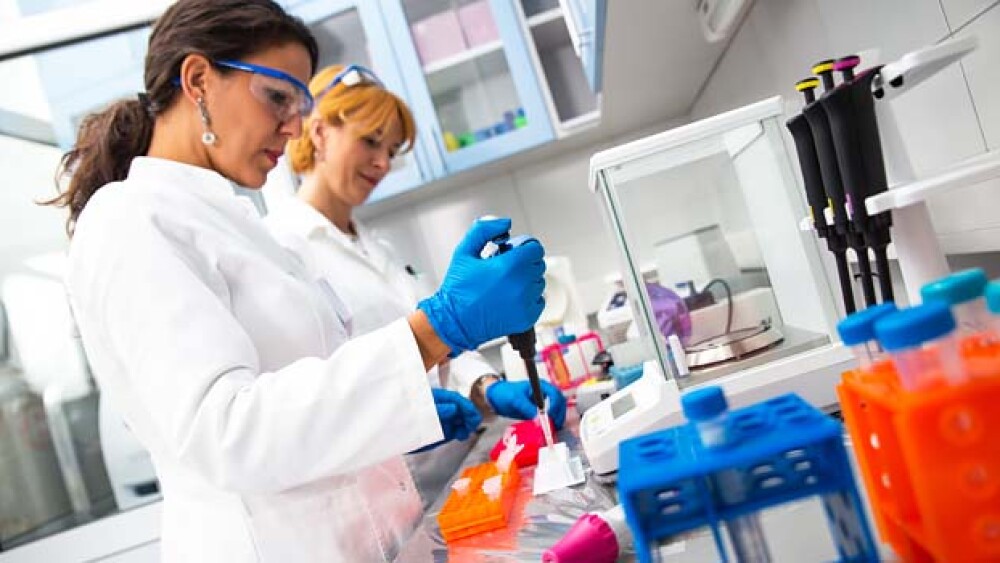A look at the one position that stands out for its role in the biopharma industry.
USA Today recently published a list of the 10 fastest growing jobs. They include positions such as interpreter/translator, cost estimator, audiologist and pharmacy technician. But one position stands out for its role in the biopharma industry. Let’s take a look at biomedical engineering.
Noting that it combines tech and healthcare into one field, USA Today says, “These engineers design and create the tools, equipment, devices, computer systems, and software that are used in healthcare. They can work in academic research settings, the private sector or government.”
The University of Michigan’s Biomedical Engineering program notes, “Biomedical engineering (BME) improves human health by applying engineering principles and methods to medical problems. Biomedical engineers might find themselves developing:
· Sensors that identify cancer biomarkers in blood
· A device that mimics the blood-brain barrier for use in drug testing
· Neural probes to treat Parkinson’s with deep-brain stimulation
· Computer models that suggest how complex proteins are assembled
· Waveforms to image the body with MRI
· Ultrasound therapies to treat tumors non-invasively
· Injectible stem-cell cultures to regenerate damaged tissue.
Biomedical engineers need a solid foundation in the biological sciences as well as the typical engineering training. The University of Michigan’s BME program notes that about a third of its undergraduates continue to medical school, with the rest split about half and half between industry and other graduate programs.
According to the Bureau of Labor Statistics (BLS), the median pay for biomedical engineers in 2016 was $85,620 or $41.16 per hour, and there were about 21,300 jobs.
It’s worth noting that USA Today claims the BLS is projecting a 23 percent growth potential in BME by 2024, although that doesn’t appear to be on the BLS website. The UC Davis Biomedical Engineering website claims the BLS projects biomedical engineers to have employment growth of a whopping 72 percent, although it’s important to understand that compared to other fields of engineering, such as electrical and mechanical, there are fewer jobs for biomedical engineers. The BLS is projecting 27,600 biomedical engineering jobs in 2018, compared to about 304,600 electrical engineers and 253,100 mechanical engineers.
University of Michigan, for example, offers both undergraduate and graduate programs, as well as a five-year Bachelor’s/Master’s program in biomedical engineering. It has three concentrations: Biochemical, Bioelectrical and Biomechanical.
The biochemical concentration has the students focusing on the “fundamental properties of cell, molecular, and tissue biology to engineer chemicals and materials (e.g. prosthetics, engineered tissue, new therapeutic drugs) that interact with living systems.”
The bioelectrical concentration, not surprisingly, focuses on electrical and systems engineering to develop modern medical devices and systems. And the biomechanical concentration “is a hybrid discipline requiring a thorough understanding of classic engineering mechanics, physiology, molecular biology, cell biology, mechanics and dynamics of solids and fluids, and how they can be used together to address biomedical problems.”
Examples of current jobs include:
Senior Device Engineer for MedImmune in Gaithersburg, Maryland. This individual will lead complex combination product/device design transfers, technical commercial scale-up, process validation and lifecycle management for medical devices and combination products. The position calls for at least a Bachelor of Science in mechanical or biomedical engineering or related field and a minimum of five years of technical experience in medical device/combination product development.
Senior/Principal R&D Engineer for BAROnova in San Carlos, Calif. This position calls for a Bachelor of Science or Master’s of Science in mechanical or biomedical engineering and a minimum of 10 years of experience in medical device development. This is a project lead/primary engineer position that will involve developing product iterations and improvements based on clinical system design to support cost-effective commercial product launches.
Product Development Engineer I or II for Fluxus in Santa Clara. This position is part of the product development team and will have a role in product prototyping, design, testing and the implementation of manufacturing operations. Specifically, the work is related to early-stage development of a bio-chip based, optofluidic diagnostic platform. The position calls for a Master’s of Science in biomedical, mechanical, electrical or chemical engineering, chemistry or biochemistry, with three to five years of hands-on research and development, engineering or product development experience.
Scientist I (NCI) for Leidos Biomedical Research in Frederick or Lewiston, Maryland. This position calls for a PhD in biomedical engineering, physics, chemistry or a related field or eight years’ equivalent experience. The Strategic Pilots Incubator (SPI) oversees the development and management of a portfolio of exploratory multidisciplinary projects related to cancer research and treatment. The projects will analyze the complex interactions in tumor cells, tissues and model systems. It is in support of a newly established High Content Technology Facility at the Frederick National Laboratory for Cancer Research.
For individuals with degrees in engineering or biomedical engineering, and for students with an interest in both engineering and the life sciences, biomedical engineering can be a rewarding and in-demand job.





